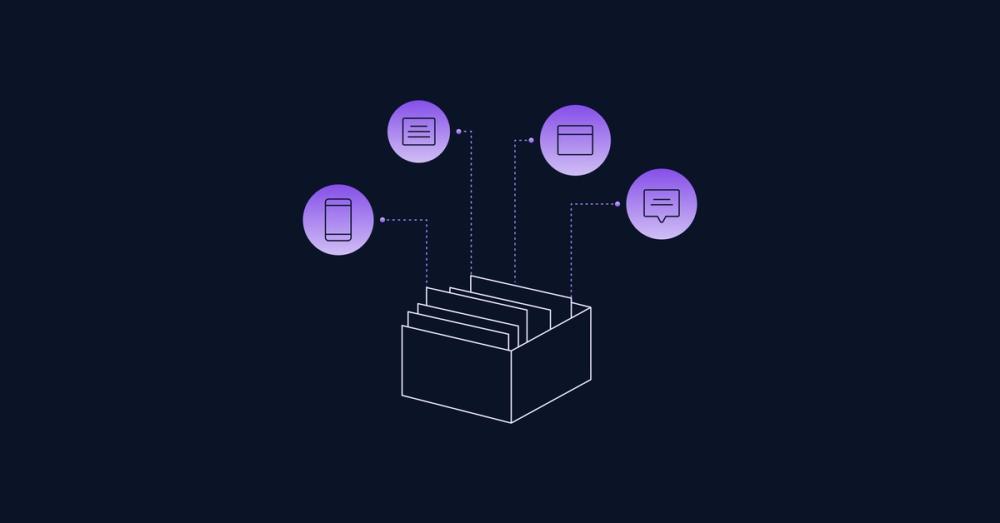- Usability Testing
- Discovery Research
IN/OUT 2024 UX edition

As we step into the new year, it's only natural for us to reflect on what we hope to witness more and less of in 2024. We explore a series of trends, shedding light on what we hope to see less of and more of in the digital landscape.
Out Link to this headline
Coercive Paywalls Link to this headline
A banner or pop-up that temporarily obstructs content, often employing deceptive tactics to encourage users opt in pay for access without previewing the content beforehand. These paywalls aim to induce users into subscribing or making a payment without allowing them to assess the content’s value.
Instead, adopt a more ethical approach focused on transparency. Ensure users are fully informed about what's included in premium content, additionally provide abstracts for paywalled content. When users opt to participate, clearly communicate the benefits they will receive. Keep logins and sign-up interface elements discreet and unobtrusive.
Trailing Research Link to this headline
Moving evaluation of ideas and features to the end of the implementation cycle wastes time and effort. Late-stage testing may lead to missed opportunities to uncover critical issues early on. Addressing problems at this stage can be less effective and more resource-intensive than catching them in earlier phases. If users encounter significant usability issues, post-launch during late-stage testing, it can be frustrating and disappointing, potentially affecting their perception of the product or brand.
Instead, UX research can be done on very rough ideas right at the start. This approach is designed to ensure that a user-centered perspective is maintained from the initial concept through to the post-launch phase.
Although it may initially appear daunting, but consider the following: which scenario is more embarrassing? Asking individuals for their feedback on a text, graphic, or image that you've created in just 2 weeks, or seeking their input on content you've painstakingly developed over the course of six months?
The process becomes more straightforward when the content is in its early stages and is less refined. Critiques are more readily provided, and subsequent adjustments are less extensive. Ultimately, this approach minimizes time wastage.
Preconceived Product Path Link to this headline
Internal stakeholders are typically closely connected to the product, which makes them a valuable source of knowledge and insights. However, it is important to recognize that their own biases and assumptions, regardless of their proximity to the product. Simply obtaining approval from stakeholders is insufficient.
Instead, Gather insights from stakeholders by conducting stakeholder interviews, but give precedence to validating products through feedback from the actual end-users. The combination of both will produce data-rich artefacts.
In Link to this headline
Accessibility First Link to this headline
In web development accessibility has always been a factor that aligns well with other best practices, like responsive design for device independence as well as multi-modal interaction. However it is also negatively impacted by increasing page complexity. Content variety increases as do interactive website elements, both of which are hard to implement in a truly accessible fashion.
Building accessible solutions is an ethical thing to do as it means that all people can access the content put online. There’s also the European Accessibility Act which, starting mid 2025, will make it mandatory for the private sector to be compliant with accessibility guidelines. Simultaneously, there’s an increase in assistive technology use driven by factors like aging populations and technological advancements, e.g. internet of things with integrated voice assistants and artificial intelligence, the rise of wearables.
And there are of course also business reasons to go with accessible designs and implementations: it has an impact on search engine rankings, it increases retention as it usually leads to easier, more intuitive interfaces and it opens up websites to a broader audience. It is a competitive distinction too, as a huge majority of websites still exhibit accessibility issues.
Sustainable websites Link to this headline
Websites nowadays feature complex setups that involve many moving parts. Often interactions are involved that make heavy use of JavaScript and other technology to present contents in a playful way. This however requires not only servers that run day and night, it also outsources some rendering work to client computers. Broadband connections lead to high-quality image usage and interactive embeds for tracking and multi-media. Oftentimes these come without proper optimization, thus there’s huge potential to save energy.
Using image pipelines to serve optimized images for all kinds of devices and screensizes as well as moving to serverside analytics can help with making websites more sustainable.
Micro (UX/UI) experiments Link to this headline
Software development is hard, not only technically but also when understanding user needs. It’s in the nature of software to evolve with new requirements and insights after its initial release. This is true for websites and their content, too. It makes sense to consider this right from the beginning and build websites and applications in a way that makes it easy to embed experiments to learn about how users interact with it.
These micro experiments create a productive feedback loop between product, research and design teams. Prioritizing frequent, bite size, continuous research yields insights for iterative improvements. Teams that integrate user feedback into their work processes, with the aim of enhancing the user experience, tend to tend to arrive at viable solutions faster. It's worth noting that every research effort, regardless of its size, holds value.
Prioritising frequent but bite size research creates a productive feedback loop between the research and design teams. Insights gathered from continuous research are used to inform design iterations. Teams that integrate user feedback into their work processes, with the aim of enhancing the user experience, tend to tend to arrive at viable solutions faster. It's worth noting that every research effort, regardless of its size, holds value.


